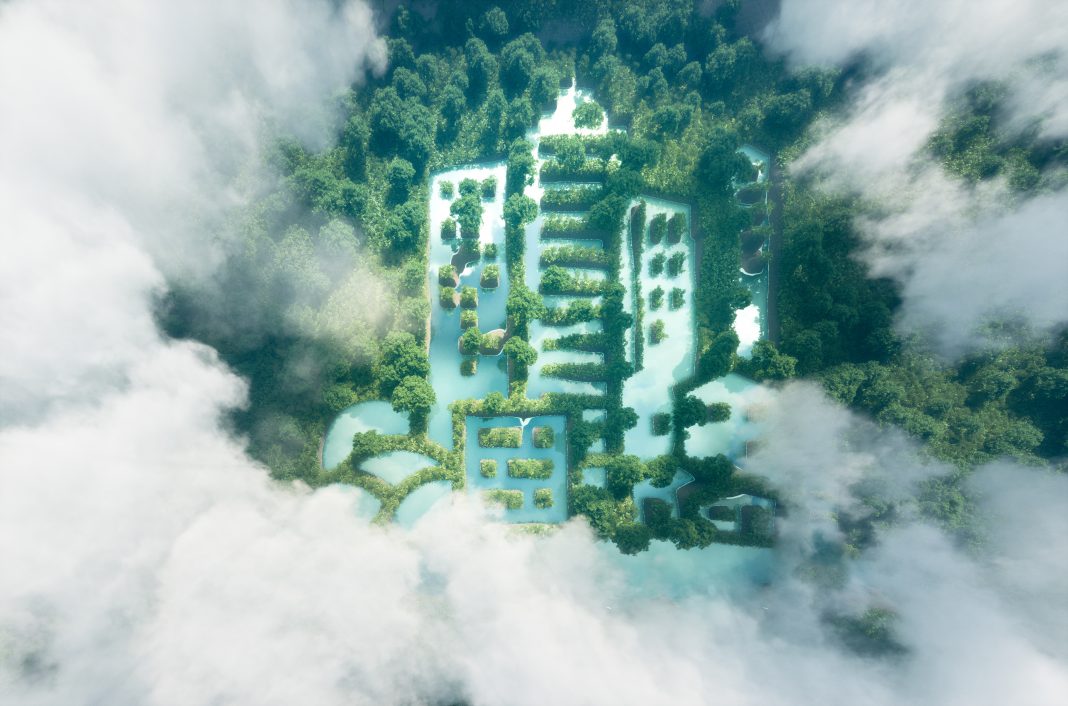Fabio Mercurio of ABB Smart Buildings explains how smart technology can reduce energy use and CO2 emissions in commercial and industrial buildings, giving insight into how this is being achieved through innovative decarbonization projects in Germany and China
When it comes to tackling the global threat of climate change, our world leaders need to take action in deciding which levers to prioritize. At COP26, for the first time, an entire day was dedicated to our global built environment, the management of our buildings. The significant role they play in achieving critical climate objectives is clearly moving up the agenda.
Buildings are responsible for 40 percent of global energy consumption and 33 percent of greenhouse gas (GHG) emissions, putting them in the frontline of the fight against climate change. 136 countries now include increasing building efficiency or decarbonization in their climate goals, or Nationally Determined Contributions, compared with 88 in 2015. And more than 1,000 cities have now signed up to the ‘Cities Race to Zero’ commitment to achieving net-zero carbon emissions by 2050.
While this all represents positive progress, time is not on our side and rapid innovation is needed. According to the World Economic Forum, global building floorspace is projected to double by 2060, yet only 3 percent of investment in new construction is green and efficient, while the renovation rate for existing buildings stands at less than a third of the rate required to meet the Paris Agreement climate goals.
Why digital buildings are the smartest move
Smart buildings integrating a new generation of digital, automation and electrification technologies, will play a vital role in helping reduce energy usage and CO2 emissions, while improving comfort and productivity, to create a safer, more sustainable world.
Given the enormity of the climate challenge, and the huge carbon intensity of today’s built environment, we need to focus our efforts where we can make the biggest impact in the shortest time – with the aim of achieving both environmental targets and commercial futureproofing.
Like any other outlay, building solutions need to deliver in terms of return on investment (ROI), and the bottom line is that more effective and efficient use of power saves money. Heating, ventilation, air conditioning (HVAC) and lighting alone can account for as much as 50 percent of energy use in an average commercial building.
A smart building uses interconnected technologies to improve performance across key metrics such as energy management, water use, air conditioning, access, automation and lighting. Cloud-based, interoperable platforms allow lighting, heating and ventilation systems to integrate seamlessly with one other.
Armed with the resulting data on how and when facilities are being used – and thus how efficiently and effectively a building operates – managers can proactively reduce energy usage and emissions, create safer, more productive work environments, and lower costs. By making use of these digital innovations, there’s the potential to reduce energy use by 30-50 percent.
Smart, digital technologies can revitalize, as well as decarbonize, ageing building stock. Artificial intelligence systems optimize data collected by smart Internet of Things (IoT) devices around the building, while touch-free interfaces improve hygiene in the wake of Covid-19. Smart sensors adjust light, air quality and temperature based on user preference.
Digitalization is the key enabler of the smart buildings revolution, enabling ‘active efficiency’, a term used to describe the optimization of energy use by integrating traditional energy efficiency measures with digital technologies. Digital solutions embodied in ‘smart’ equipment can actively reduce energy use and emissions, create more amenable workspaces, and even automate demand response, meaning buildings can flexibly adjust to peaks and troughs in renewable power generation.
Inside ABB’s zero-emissions factory in Germany
Digitalisation is making carbon neutral buildings a reality and using our own facilities as a test bed, we’re committed to support our customers achieve their own carbon reduction goals and create the sustainable buildings of the future. Whether it’s a new development, or retrofit of an existing plant, we’ve created replicable, scalable and profitable technology blueprint that can be integrated with third-party solutions worldwide.
Our production plant in Lüdenscheid, Germany makes products for electrical installation and is a real-life example of success in energy transition. In this case, using our scalable energy management system. By deploying energy-efficient technology into one digitally networked and controllable intelligent system, we’ve transformed the manufacturing facility into a carbon-neutral production site.
Lüdenscheid is powered by around 7,300m2 of rooftop photovoltaic panels which on sunny days generate up to 100 percent of the site requirements. The system is set to deliver around 1,100MWh of climate-neutral solar power a year, roughly equivalent to the demand of 340 private households.
Using the site’s cogeneration plant, which has double the energy efficiency of a traditional coal-fired power plant, Lüdenscheid can generate 14 percent more energy than is needed, with the surplus sold back into the grid. When site solutions can’t cover a peak in demand, additional green energy is sourced, guaranteeing 100 percent CO2-neutral production.
Energy management technology sits at the heart of the entire system at Lüdenscheid. Operating largely autonomously, it provides constant surveillance and optimum control of energy production, consumption and storage. The learning system calculates the optimum energy flow based on predictive data and compensates for deviations in real time.
We also integrated a battery energy storage system with an output of 200kW and a capacity of 275kWh, free-to-use electric vehicle (EV) charge points and smart switchgear for enhanced energy distribution.
As of 2019, the solar-powered plant at has generated 721,980kWh, which equates to a carbon saving of 340 tonnes during the first five months of operations. Ultimately, the flagship site at Lüdenscheid is expected to save approximately 630 tonnes of CO2 a year in total.
Decarbonising industrial operations in Beijing
Building on Lüdenscheid’s proof-of-concept model, in 2019 we launched ‘Mission to Zero’ – a replicable and scalable technology blueprint that can be integrated with third-party solutions. The program helps buildings follow in the facility’s footsteps to become smarter, safer and more sustainable using integrated digital solutions and low-voltage switchgear.
Our 24,000m2 site manufacturing facility in Beijing, China, is living proof of the successful blueprint. Through technological innovation and renewable energy integration, the factory – which employs more than 600 people making low-voltage products – has reduced CO2 emissions by 5,909 metric tonnes per annum, saving 610MWh of energy and around $51,000 every year.
Smart energy management technology is used to connect all devices to a cloud-based electrical distribution control system for monitoring, optimization and maintenance prediction using big data and artificial intelligence. Building control systems then optimize the control of lighting, blinds, heating, ventilation, safety and other devices.
As well as utilizing digital and smart energy solutions, environmental impact is reduced still further by LED lighting, electric vehicle (EV) charging, solar power generation, and renewable energy integration.
The benefits are tangible. Switching from 1,400 fluorescent lights to LEDs increased light efficiency by 80 percent. A new rooftop photovoltaic system helps reduce annual GHG emissions by 400 metric tonnes by delivering around 420MWh per year, enough to power almost 69,000 homes for a year.
Like Lüdenscheid, there is EV charging infrastructure at the Beijing facility, featuring two AC and one DC points for employee vehicles parked for long periods. Having achieved ISO 50001 certificate in 2019 and National Green Factory status in 2020, the manufacturing site is currently working towards green electricity certification.
Reaching our net-zero destination
As evidenced by the focus on building and construction at COP26, revolutionising our buildings is a priority if the world is to successfully decarbonize and achieve net-zero emissions by 2050, while creating safer, more flexible and productive workspaces in the wake of the Covid pandemic.
A new generation of smart buildings that deploy digital, electrification and automation technologies is the key to unlocking substantial CO2 emissions savings. The onus is now on industry, in close collaboration with the building and construction sector and specialist technology providers, to implement the scalable solutions that can be applied to manufacturing facilities, homes, cities and industry around the world to reduce their environmental footprint.
The success of our factories means other commercial buildings can benefit from the tried-and-tested advantages of a system in which all components are digitally networked and controllable, enhancing energy efficiency, sustainability and resource conservation – paving the way for a genuine zero-emission future for industry and beyond.
Fabio Mercurio

ABB Smart Buildings













![[Video] Fireco: 80 new fire doors required for residential flats in London](https://www.pbctoday.co.uk/news/wp-content/uploads/2025/04/2024-06-01-Lords-view-one_1200x750_004-218x150.webp)
